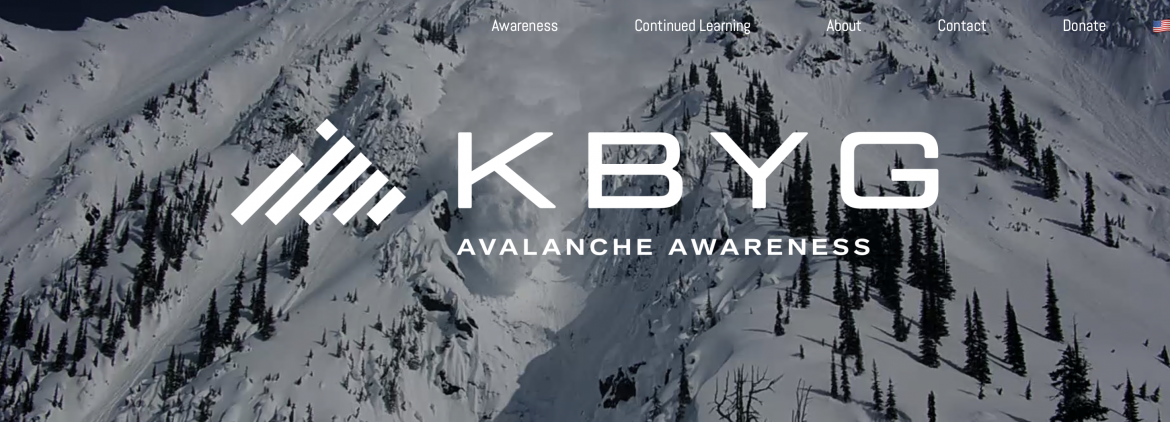The Know Before You Go program, otherwise known as KBYG, receives an update for 2022 with an emphasis on motivating backcountry users to develop their avalanche awareness and motivate them to pursue more knowledge and experience.
Some things stick rather than roll off the tongue: KBYG, or “Know Before You Go,” is one of those things. KBYG is not an acronym, and it’s sort of clunky, but it is ours and states its mission right up front: As backcountry travelers, we do need to know some things before we go.
Since its inception in 2004, KYBG has been an instrumental avalanche awareness program spearheaded by the Utah Avalanche Center. A KBYG refresh came in 2015, and online learning modules were live in the fall of 2018, pre-pandemic.
This October, the third iteration of the KBYG program was released. The new program emphasizes the basics with four main sections: Get The Forecast, Get The Gear, Get The Training, and Get The Picture. The program includes a one-hour presentation (this can be taken online or in-person), online learning modules to reinforce content, a soon-to-be-released film zeroing in on personal stories and avalanches, and information on taking the next steps regarding avalanche awareness.
Mark Staples, Director of the Utah Avalanche Center (UAC), wrote, “Overall, I’d like to reemphasize that our goal is to motivate more than educate. As an example, in Get the Training – we tried to avoid listing all the things people will learn in a class, and instead show them how they’ll see the backcountry differently after a class. Since the beginning of KBYG, we have wanted to stay positive and never teach ‘abstinence.'”
Backcountry adherents know Utah is no stranger to an often hair-trigger snowpack, avalanches, and excellence in forecasting and educating. When I want to see how avalanche forecasting is presented at a high level, I’m often on the Utah Avalanche Center’s website; their accident reports are often master classes in avalanche analysis.
It should be no surprise then that the 2022 KBYG reboot stands on the UAC’s strong reputation, and they deliver. The new KBYG content was derived from an advisory committee including the Northwest Avalanche Center (NWAC), the Colorado Avalanche Information Center (CAIC), Avalanche Canada (AvCAN), and the National Avalanche Center (N.A.C.). Along the way, the advisory committee engaged specialists and educators for input.
For longtime readers of WildSnow, you’ll not receive pro-level analysis on how to dig a pit and analyze snow crystal adhesion or hone interpersonal skills to ensure good communication by taking the KBYG program. The KBYG curriculum is the stuff you should know before you ever slap a skin on a ski and slide uphill.
KBYG is the first step to becoming avalanche aware. Staples explained he hopes KBYG inspires people to enroll in more advanced classes. “We hope to create curiosity in them. A nuanced difference is that we try to answer the question ‘why’ more than ‘how.’ Learning the ‘how’ should occur in follow up classes.”
You can watch the launch of the new KYBG program below.
Beyond the details about the KBYG program, the website includes resources for continuing education in the field and online to increase your level of training. The site is great for newcomers and old hands looking to retrigger a synapse that hasn’t fired since last winter.
The KBYG site includes information on becoming a KBYG presenter, or how to host a KBYG presentation.
Jason Albert comes to WildSnow from Bend, Oregon. After growing up on the East Coast, he migrated from Montana to Colorado and settled in Oregon. Simple pleasures are quiet and long days touring. His gray hair might stem from his first Grand Traverse in 2000 when rented leather boots and 210cm skis were not the speed weapons he had hoped for. Jason survived the transition from free-heel kool-aid drinker to faster and lighter (think AT), and safer, are better.

